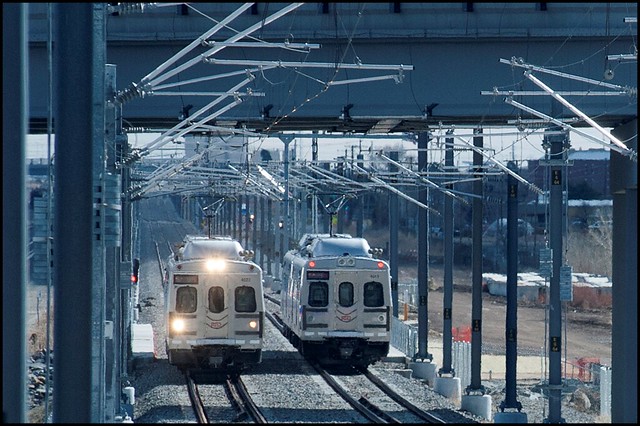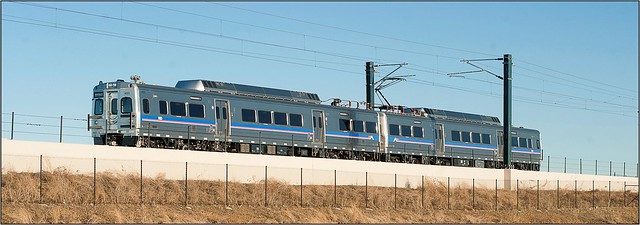When RTD purchased Denver Union Station as part of the
FasTracks plan, it seemed a natural fit. RTD would be using DUS as a central hub for its Light Rail and Commuter Rail routes for the entire Denver metropolitan area. Without RTD, the future of DUS was at best uncertain. The facility was constructed when passenger rail was the main method of intercity travel. As the glory days of passenger rail faded, so did the glory of the station. The schedule of the Rio Grande Zephyr and later Amtrak's California Zephyr couldn't generate the funds needed for upkeep on a cavernous waiting room, underground concourse, and network of tracks.
Now, with the ownership of
Denver Union Station comes the rights of RTD to make changes. According to the
Denver Business Journal, Amtrak has expressed its concerns to Congress and the private rail excursion companies have their own needs to look after as RTD plans the 4 year overhaul of the downtown terminal. What passenger rail traffic flows through Denver is directly related to RTD's plans.
If Amtrak does not get adequate space and placement at the station for the California Zephyr and the proposed Pioneer service from Denver to the Pacific Northwest, could Amtrak passengers possibly be greeted to Denver by an Amhut like the one in
Provo, Utah, a featureless platform with a generic shelter that offers
no ticket office hours,
no Quik-Trak hours,
no checked baggage hours, and
no help with baggage?
As the DBJ article also points out, what of Denver's love story with the
Rio Grande Ski Train? RTD feels a "social obligation" to it, but that's different than a contractual obligation. Where do the skis, poles, boots and people go if the platforms are spoken for by the local commuter train to Brighton? Putting more cars on I-70/US 40 to Winter Park is not an option.
There's also the future of high speed rail service along I-70 at least to Eagle-Vail and probably to Grand Junction and even Steamboat Springs and Craig. Skiers spending 8 hours--eight!--in a car for a day on the slopes is poisoning the future of ski tourism in Colorado. The
Rocky Mountain Rail Authority continues to champion what remains a vital link to Colorado's future within the I-70 corridor. The RMRA is also exploring the possibility of regional service between Denver, Colorado Springs, Pueblo, Walsenberg, Raton and beyond, along with Ft. Collins, and Cheyenne, all along the Front Range. With the axes of both routes crossing in Denver, accounting for such an expansion is imperitive. Most notably, Denver Union Station must have a functional southern entry and egress for regional trains to access the I-25 route. The snake-like light rail shoe-horned onto Denver's street grid would
never fit a train designed for intercity service, much less high speed rail.
Finally, space has always been available for private car excursions to park their plush, often historic passenger equipment for extended stays in Denver. If RTD hangs out the No Vacancy sign, how likely is the business and tourism that result from such extended stays?
RTD serves Denver, but the Regional Transporation District needs to be thinking regional on a much larger scale than just the capital city and its suburbs. Denver prospers so long as the region prospers. Building national and regional facilities to meet the growing demand benefits RTD's tax base and will keep Denver on track in the next 50 years.



















